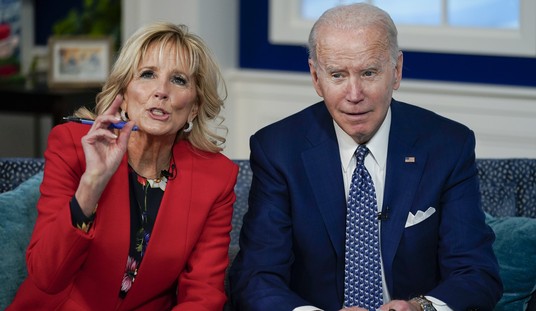Whether the Left realizes it or not, their favorite publications have been writing somewhat extensively how they can reverse their political fortunes. Seriously, in some cases, like The New York Times and Washington Post, they’ve all but constructed a massive banner explaining what needs to be done for 2018 and beyond: reclaim white working class voters. Yes, Democrats need to flip the very voters who rejected them in 2016 in order to retake Congress and the presidency. This is no easy task. Structurally, the party apparatuses in rural America have all but collapsed. There is no infrastructure. There are no candidates; the GOP rules supreme. In Appalachia, once a bastion of Democratic Party support, Hillary Clinton only won 21 of the 490 counties that dot the region—and those 21 counties broke for her for one simple reason: college campuses.
Yet, Franklin Foer of The Atlantic had a lengthy piece in their July-August edition, which analyzed the Democratic Party’s issues with white voter outreach, along with explicitly stating how winning them back is essential for the party’s future. There are some hard truths that he lays out for the archetypal liberal. Yes, Barack Obama won twice, but his party was utterly decimated in eight years. There are 1,000 fewer Democrats in office at all levels than there were in 2008-09. The GOP control Congress, the White House, 69/99 state legislatures, and two-thirds of the governorships. They are the dominant political force in the country. The notion of a permanent Democratic majority that was all the rage post-2008 was shattered by 2010. It may have received new life in 2012, but with Trump’s win—the Left is still reeling from such a stinging defeat.
Foer wrote that the Democrats have a huge division over the direction of the party concerning race and class. You have the landed urban professional elite that shuns white voters and adheres to identity politics. The other is the economic left, those who rail against big banks, rigged market systems, and elites who lobby and push for economic policy that usually ends up hurting the middle and working classes. There may be wings of comparable size within the Democratic Party, but the big wigs that are running the show right now are those who latch onto Black Lives Matter, transgender bathrooms, speech codes, safe spaces, and lectures about white privilege; a nicely packaged way for the Left to tell someone to shut up when they say something they disagree with. Yes, we’re dealing with eight-year-olds in many ways. The anti-law enforcement sentiment to appease communities of color is popular in these concrete bastions, but outside the beltways, law enforcement is one of the few jobs left where the non-college educated can find employment with a decent salary and good benefits. As Joan Williams wrote in Harvard Business Review, bashing police, along with other disparaging remarks about Middle America, comes off as one thing to rural Americans: it’s still okay to mock and denigrate those of a lesser economic class. That’s been a hotbed for resentment between the two Americas, or as Chris Arnade of The Guardian put it, the front row and the back row.
Maybe for a while Democrats did not know that their issue with white working class voters would be an issue due to Obama’s wins, but 2016 exposed a lot. Besides being a terrible campaigner, the Clinton operation rarely, if ever, reached out to working class whites. She wanted to copy Obama by winning the cosmopolitan coalition he built, but there were a few issues. One of them was the intense anti-elite sentiment that Clinton never really seemed interested in addressing. Millennials and a healthy number of young blacks were not fans of Hillary. Meanwhile, Trump was killing it with working class whites. As Foer noted, Clinton doubled down in trying to win over the urban elite to offset Trump’s gains with rural voters. In fact, Foer notes in his passages about the Clinton train wreck how ignoring a massive bloc of voters is an immensely stupid campaign strategy. Also, there was one person who knew the dangers of ignoring the white working class: Bill Clinton.
Recommended
Bill Clinton had a premonition of how things could go very wrong. He revealed his foreboding—perhaps fittingly—at fund-raising events. He would hint at what he considered his wife’s glaring vulnerability: the roiling discontent of the white working class. The travails of the group—44 percent of eligible voters—preoccupied him.
[…]
Some in Clinton’s camp could clearly see that a large chunk of the country seethed against elites, yet the candidate could never quite understand the need to insulate herself from the ire, much less harness it.
[…]
…it was the mélange of minorities, Millennials, and white professionals that provided the basis for the so-called Obama coalition. And if Clinton had carried over any lesson from the 2008 race, it was the necessity of mimicking Obama’s tactics and methods, even if she sometimes produced only ersatz copies of them.
[…]
By the spring of 2016, one top Clinton adviser explained to me, the campaign’s own polling showed that white voters without a college degree despised Clinton. The extent of their loathing was surprising—she polled far worse with them than Obama ever had, especially in states like Ohio and Iowa. Trump compounded her challenge. From the moment he announced his candidacy, he aimed his message at the white working class. He pursued that group with steadfastness. The threat that he might capture an unusually large chunk of it persuaded Clinton to pursue professionals with even greater intensity in an attempt to offset Trump’s potential gains.
With hindsight, it’s possible to see the risks of her strategy. Her campaign theorized that dentists, accountants, and middle managers needed to fully understand how Donald Trump surrounded himself with bigots and anti-Semites. “From the start,” she argued in a sharply worded speech in August, “Donald Trump has built his campaign on prejudice and paranoia.” Her campaign ads against Trump emphasized his misogyny. The attacks highlighted Trump’s greatest weakness, but also played to his greatest strength. Trump had spent the entirety of his campaign trying to foment a culture war, and Clinton zealously joined it.
The end result would be focusing more on what Trump said in the past and present than beefing up a winning economic message. In the end, more people felt that Clinton cared more about transgender bathrooms than jobs, along with 42 percent of voters who voted for Obama but flipped for Trump supporting the Republicans because the felt the Democratic agenda favored the wealthy. For a liberal, that’s an epic failure in messaging—and one that’s usually a slam-dunk for the Left: We’re for you little people and the GOP is only for the wealthy. Well, her Wall Street ties undercut that a bit.
Foer added that unlike Clinton, Obama conducted excellent voter outreach, enough for him to win twice. MSNBC’s Joe Scarborough brought this up as well, the notion that reaching out to these people to reduce a drumming in the red districts was key. Instead of losing by 40 points, you lost by 20. That difference, coupled with winning the urban areas, is how Obama won his elections. He didn’t win white working class voters, but he did well enough where the score wasn’t run up in the way Clinton endured in 2016. Trump won rural voters by a three-to-one margin, if it was two-to-one—the election would have been different. He joined Stanley Greenberg who conducted focus groups for Democrats in Macomb County, Wisconsin, where Stanley Greenberg has been hosting focus groups for years. Besides the changing of racial attitudes in the region, which you can read on your own time, Greenberg points out something that should give the GOP some pause. These Trump voters are shiftable, and they’re not happy that President Trump is stacking some positions with Wall Street folks. At the same time, Foer recognizes how bad the Democrat’s have played the populism game:
The focus groups were designed to probe for weakness in Trumpism, to test lines of attack that might neutralize his appeal. Once Greenberg has earned a room’s trust, he introduces new ideas to it. His moderator asked the subjects whether it worried them that Trump had stocked his administration with Wall Street chieftains. That piece of news, it seemed, hadn’t traveled widely in Macomb, and it consistently rattled the groups. “It’s going to be a lot of the same old garbage,” one man groused. Concerns about Trump’s temperament did nothing to dislodge the participants’ support—the connection these voters felt with Trump was personal and deep—but the fact that he might align with traditional Republicans annoyed them to no end. (The groups reacted angrily when shown photos of Paul Ryan and Mitch McConnell. People described them as “shifty” and “for the upper class.”) What many Macomb voters value about Trump is that he represents an unaligned force in American politics.
[…]
The spectacle of Democratic elites flagellating themselves for their growing distance from these voters has the whiff of the comic—the office-tower anthropologists seeking to understand Appalachia from their Kindles. But there’s another way of putting the problem. If the stagnation of the middle class and the self-reinforcing advantages of the rich are among the largest issues of our time, the Democrats have done a bad job of attuning themselves to them. The party that has prided itself on representing regular people has struggled to make a dent in the problem—and at times has given the impression of indifference to it. A healthy republic can’t afford for a seething populace to fall deeper into its hostilities.
Foer then discusses the future of the Democratic Party, the obstacles facing their road out of the political wilderness, and the 2020 election, where he describes Sens. Cory Booker (D-NJ) and Elizabeth Warren (D-MA) as those who a) might run; and b) are emblematic of the two wings that appear to be growing closer to all-out war.
There are in fact two different lefts in bloom today, with differing understandings of American politics. One strain practices what its detractors call identity politics—it exists to combat the bias and discrimination that it believes is built into the system. What it seeks isn’t just the protection of minorities’ and women’s rights, but the validation of minorities and women in the eyes of the national culture, which it believes has marginalized them.
The cultural left was on the rise for much of the Obama era (and arguably, with the notable exception of Bill Clinton’s presidency, for much longer). It squares, for the most part, with the worldview of socially liberal whites, and is given wind by the idea that demography is destiny. It has a theory of the electorate that suits its interests: It wants the party to focus its attentions on Texas and Arizona—states that have growing percentages of Latinos and large pockets of suburban professionals. (These states are also said to represent an opportunity because the party has failed to maximize nonwhite turnout there.) It celebrates the openness and interdependence embodied in both globalization and multiculturalism.
For Booker, he’s almost a carbon copy of Obama, albeit the discount version. Foer added the New Jersey senator has no problems with identity politics, but balances that out with his defense of Wall Street and Big Pharma. He’s for criminal justice reform, disconcerted about the mass incarceration issue, and said that he would take his message to the most urban parts of America to the reddest—and whitest—parts of the country.
For Warren, Foer added she wasn’t a college radical attending protests, was a Republican, left the GOP when she found they weren’t faithful to the market system. It’s here that according to Foer, Warren splits with Sanders; she’s not a democratic socialist, nor is wealth redistribution a top ten-policy item.
Rather, Warren is most focused on the concept of fairness. A course she taught early in her career as a law professor, on contracts, got her thinking about the subject. (Fairness, after all, is a contract’s fundamental purpose.) A raw, moralistic conception of fairness—that people shouldn’t get screwed—would become the basis for her crusading. Although she shares Bernie Sanders’s contempt for Wall Street, she doesn’t share his democratic socialism. “I love markets—I believe in markets!” she told me. What drives her to rage is when bankers conspire with government regulators to subvert markets and rig the game.
[…]
At the core of Warren’s populism is a phobia of concentrated economic power, an anger over how big banks and big businesses exploit Washington to further their own interests at the expense of ordinary people. This fear of gigantism is a storied American tradition, descended from Thomas Jefferson, even if it hasn’t recently gotten much airtime within the Democratic Party. It justifies itself in the language of individualism—rights, liberty, freedom—not communal obligation.
Now, she also is a fake Indian, who became known within GOP circles for being the influencer for Obama’s “you didn’t build that” remarks at a speech in Roanoke, Virginia during the 2012 campaign. She may like markets, but the tax policy put in place would torpedo job creation and growth. Then again, the "phobia of concentrated economic power" is the type of mindset that's needed to flip these Trump voters, most of whom are not die-hard Republicans.
Whatever the case, Foer sums up his article nicely with a call for Democrats to re-embrace populism, show empathy to those with whom they have deep disagreements, and realize that the so-called permanent Democratic majority never existed. In other words, be more humble, than the insufferably smug dispatches from the liberal bubbles that infest America’s cities. I disagree that there are any permanent majorities in our politics, public opinion changes often, but what should be gleaned from this is that Democrats have an elitism problem. They view those who do not agree with them as bigots, racists, sexists, or misogynists. There is a prevailing notion within progressive circles that perhaps they’re not out of touch, it’s just that the rest of the country is wrong. Well, you have folks saying otherwise.
To win again, the Democrats don’t need to adopt an alien agenda or back away from policies aimed at racial justice. But their leaders would be well advised to change their rhetorical priorities and more directly address the country’s bastions of gloom. The party has been crushed—not just in the recent presidential election, but in countless down-ballot elections—by its failure to develop a message that can resonate with people beyond the core members of the Obama coalition, and by its unwillingness to blare its hostility to crony capitalism.
The makings of a Democratic majority are real. Demographic advantages will continue to accrue to the left. The party needs only to add to its coalition on the margins and in the right patches on the map. Doing that does not require the abandonment of any moral principles; persuasion is a different category of political activity from pandering. A decent liberalism, not to mention a savvy party, shouldn’t struggle to accord dignity and respect to citizens, even if it believes some of them hold abhorrent views.
Victories in the culture wars of the past decade seemed to come so easily to liberals that they created a measure of complacency, as if those wars had been won with little cost. In actuality, the losers seethed. If the Democrats intend to win elections in 2018, 2020, and beyond, they require a hardheaded realism about the country that they have recently lacked—about the perils of income stagnation, the difficulties of moving the country to a multicultural future, the prevalence of unreason and ire. For a Democratic majority to ultimately emerge, the party needs to come to terms with the fact that it hasn’t yet arrived.
Fareed Zakaria echoed this notion about the cultural divide and how Democrats need to understand that white working class voters not only matter, but also have worth and are dealing with issues that are of equal standing in politics. Instead, we get these articles from Slate, in which the author of the article that deals with how to not be condescending to Trump voters, proceeds to call Trump a racist scam artist. The subject being interviewed is Joan Williams, the woman who noted how condescending liberals have become regarding the working class. Also, even lefty Michael Moore noted how racism played no part here. Millions of voters who back Obama (in some cases twice), flipped for Trump. As Moore noted, they voted for a man with “Hussein” as a middle name; this isn’t racism. Nevertheless, we still get questions like this:
If we have a country where 46 percent of people are willing to vote for a racist—again, I get the political strategy of not wanting to say to everyone, “you’re a racist,” but how are we supposed to talk about that? How are we supposed to think about that?
Gee—and you wonder why the Left keeps losing elections. The road to the majority will probably not occur in 2018. Democrats simply don’t have good candidates. The farm system they used to orchestrate their 2006 and 2008 campaigns has collapsed. They need to win red districts to retake the House, and even with high Democratic turnout, that’s not enough to win, as we saw the Jon Ossoff in Georgia’s sixth congressional race. Suburban districts are key too, but there are not enough of them to win, plus while Democrats faun over the 23 or so House districts that have a GOP representative, but voted for Clinton in 2016—Democrats have 12 races in areas that Trump won. Third Way, a center-left think tank, probably offered the most brutal assessment. Besides noting the differences between the various suburban districts, they noted that even if the Democrats were able to turnout every 2016 Clinton voter who backed a Republican congressional candidate for the 2018 midterms and had them flip, it wouldn’t be enough to win the House. This is going to be a long road, but one that centers on a huge segment of the population that’s anathema to the Left. Yet, while Georgia was a site of another Democratic defeat, it could be the state that gives them hope. Keep an eye on Stacey Evans, who is running for governor.



















Join the conversation as a VIP Member